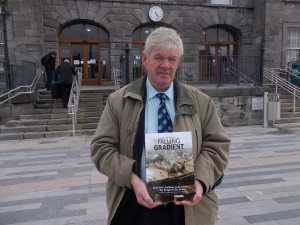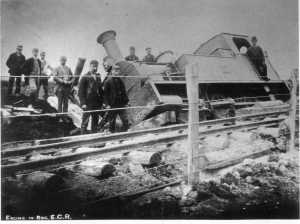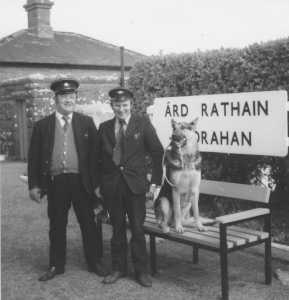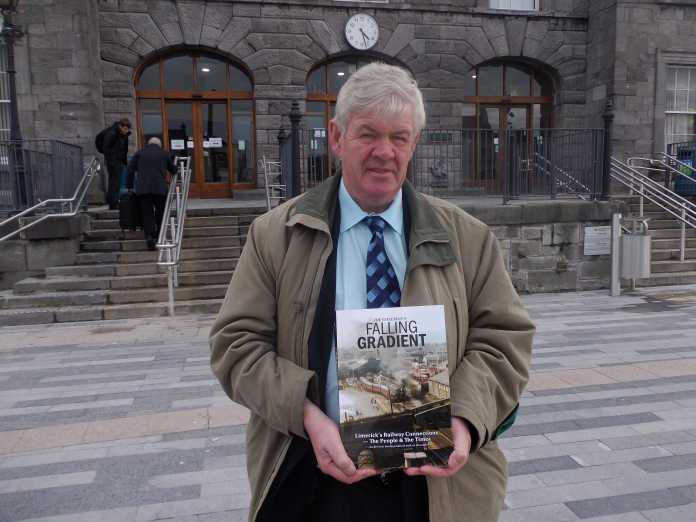
A FASCINATING book documenting the social history of Limerick’s railways has been published by local author and railway enthusiast, Joe Coleman.
Entitled Falling Gradient – Limerick’s Railway Connections, The People & The Times, this is Joe’s second book, following on from the hugely successful House Full which took a look back at the old cinemas and theatres of Limerick.
Although ostensibly a book about railways and the trains which traversed them, Joe is keen to stress that, just like his previous work, it is more than the sum of its parts.
The first ever locally produced book on the subject, Falling Gradient delves into the lives of the people involved in Limerick’s railways. From the people that built them, to the people that worked on them and the people that traveled on them, the book is, in Joe’s words, not a “definitive history”, but more of a journey through the ages, taking in the more interesting sights as it goes along.
“I was always interested in the railway books that were out there,” says Joe, whose father and grandfather both worked in the railway industry, “but I found that a lot of them were very technical, even for railway enthusiasts. This one needed to be different, it has lot of levels to it, it can be very serious, it can be funny, it can be shocking.”
It might be not a exhaustive retelling, with yearly updates on every single incident in the railway’s history, but Joe’s sizeable tome does recount the opening of the Limerick’s train system.
Finally completed at the height of the Great Famine in 1845, Falling Gradient describes the desperate efforts of local men to gain employment in the newly-completed service.

“It was really the only form of employment at that time for people, and anyone that was turned away from the railway works was destined for starvation. 600 men turned up for work, and 300 were employed one day, and 300 employed two days later.”
Costing almost £700,000 to build, the new railway revolutionised the lives of local people. “At that time it took 4-5 days to get to Dublin on horseback or horse and carriage,” Joe explains. “But now you were able to do it in 6-7 hours. It was a brand new mode of transport, you were going from 4 miles an hour to 25 miles an hour.”
Released as part of Limerick’s 1916 commemorations, Falling Gradient includes its fair share of Easter Rising stories. One such tale documents how, on the day prior to the Rising, Patrick Pierce gave instructions to have the main railways lines destroyed, thus preventing British troops traveling to the capital from Limerick, Waterford and Cork.
This tactical destruction of the railways continued into the Civil War, with several lines and bridges repeatedly bombed as both sides sought to cut off the lines of communication. This had a devastating affect on the rail system, something which Joe believes it has never “fully recovered from.”
In addition to these era-defining events, Falling Gradient also documents the countless colourful incidents which have occurred on Limerick’s railways over the years. With titles like ‘The Ambush at Cratloe’, ‘The Stabbings at Foynes’, and ‘The Runaway at Roscrea’ they might sound like the latest instalments in the Hardy Boys series but these are genuine events, featuring larger than life characters from yesteryear.

Rather than simply retell these stories in minute detail, Joe has chosen to bring them to life in picture form. Falling Gradient contains hundreds of rare photos, difficult to obtain images carefully sourced from the archives. The result is a book which not only recounts the past, but brings it to life, giving the reader a unique insight into what life on Limerick’s railways was like.
Priced at €24.95 the book can be purchased at the following outlets: O’Mahony’s Bookshop, Quay Books, The Hunt Museum, Eason’s, Crescent Bookshop, The Bookshop Newcastle West and from Ann Lyons, The Square Abbeyfeale.
Alternatively you can contact Joe directly at 0876896700 or joemeelick@hotmail.com










